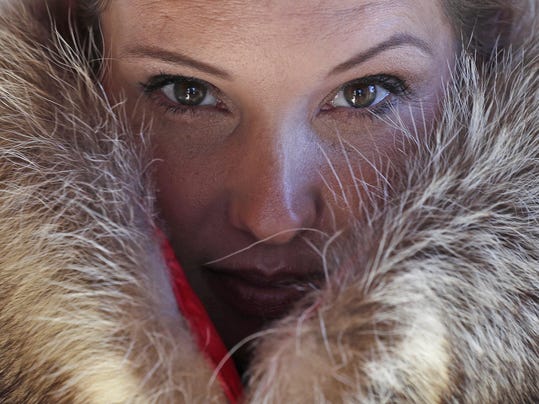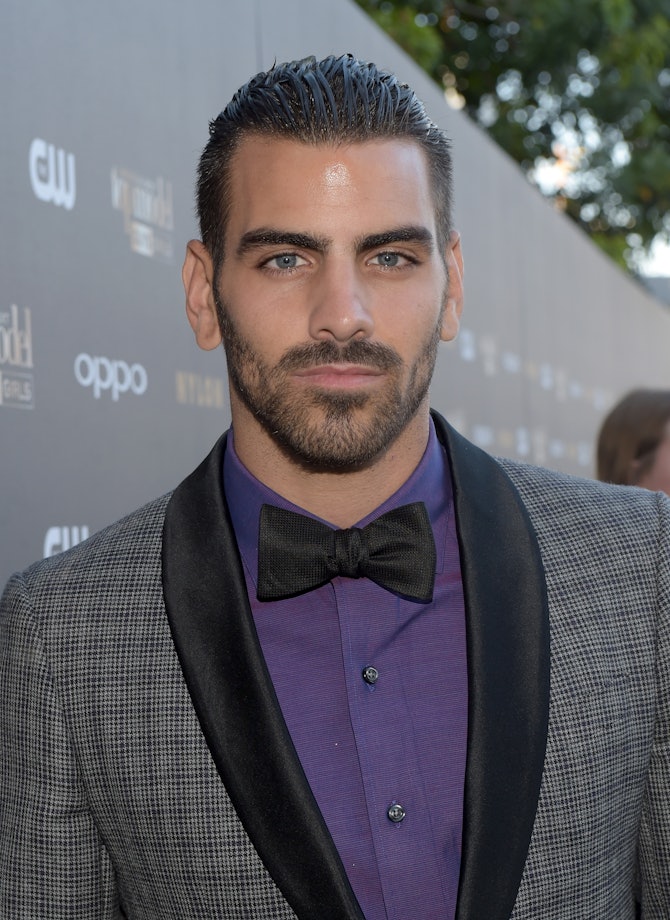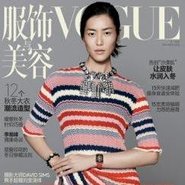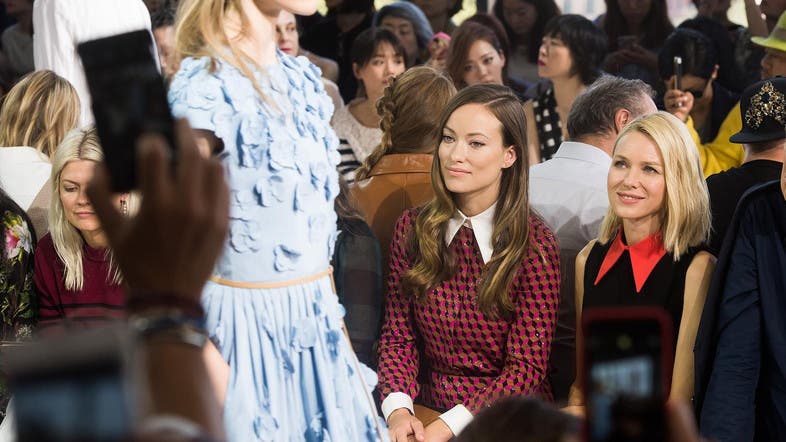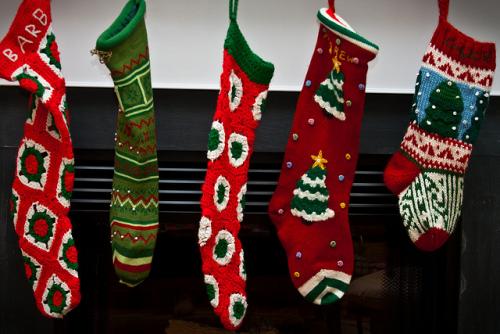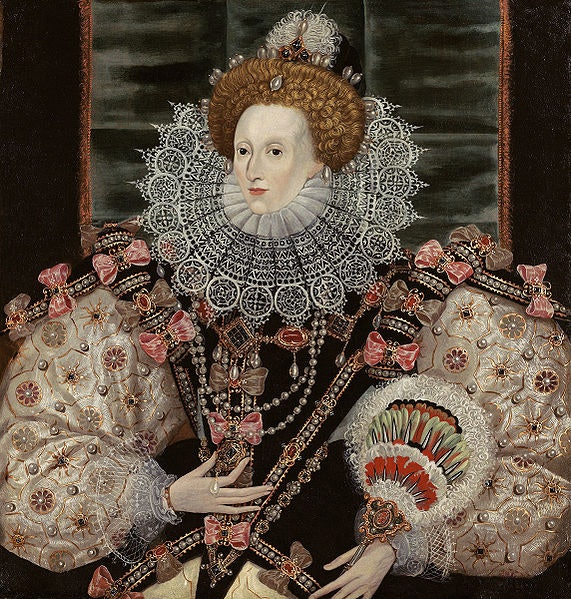Swedish fashion is having a moment.
While many labels hailing from the North have been quietly growing their
footprint domestically, Swedish brands — and men’s wear in particular — are
quickly gaining traction abroad.
“Swedish fashion is the fastest growing export industry in the country,” said
Jockum Hallin, cofounder of Our Legacy, one of Sweden’s rising brands. “In 2014,
fashion exports jumped 17.3 percent, excluding H&M — that’s three times as
much as any other export industry” — a trend, he noted, that has been surging
for the last four years.
Total sales for the industry stood at 264 billion Swedish kroner, or $3.8
billion at average exchange for the period, up 11.4 percent from the previous
year — 65 percent of which were exports.
A minimalist approach and the Swedes’ obsession with function are key to the
country’s success, according to Emma Hedlund, one half of Cmmn Swdn: “What makes
Swedish fashion so successful is the business model — it’s long-lasting, which
gives it a commercial appeal. Swedish fashion doesn’t shout, it can go directly
from the show to the store.”
“This is part of our Scandinavian design heritage — it’s clean and timeless.
We don’t add too many extras to make the garments last longer in your closet,”
added Hallin, noting how the country’s culture, based on a healthy work-life
balance, leaves individuals space to self-express while fostering an
entrepreneurial spirit.
The success has taken even locals by surprise. “When Acne started with a
batch of 100 jeans, distributing them to the cool kids in town, that was clever
marketing, but nobody expected it
to become this big,” said Sofia-Li Molin, creative director of the Swedish
Fashion Council, citing Tiger of Sweden, Filippa K, J.Lindeberg and Whyred among
the pioneers who put Sweden’s men’s wear on the map.
Today, more than half of the applicants to the Swedish fashion council’s
talent competition are men’s wear designers or unisex labels, she observed.
What connects them all is an elevated sense of sustainability that has led to
much innovation. As Johan Loman, cofounder of Stutterheim, observed: “It’s very
dark here most of the year, which forces people to stay occupied and do
something sensible with their time. Sweden is a very small country, yet it
managed to create a number of fantastic brands, not only in fashion but IT,
mobile, gaming and design and other creative industries. Climate plays a big
part in this.”
Here, some of Sweden’s Leading Fashion Lights:
BRAND: Our Legacy
YEAR LAUNCHED: 2005 with a line of T-shirts; 2008 the brand presented its
first full ready-to-wear collection
RETAIL PRICE RANGE: $80 for a T-shirt to $1,500 for a shearling jacket
TOP RETAILERS: Mr Porter, Isetan, Liberty, Opening Ceremony
KEY LOOKS: Classic dress shirts done in suede are the brand’s signature.
BACKSTORY: The duo of Christopher Nying and Jockum Hallin started out as
agents in the fashion industry. “We were selling other people’s brands and
realized that a lot was missing. We were looking for classic men’s wear staples
like a pair of chinos or a trenchcoat, but that didn’t feel like they were meant
for a 60-year- old man,” Hallin said. “We grew up in the Nineties, so we
reference that era a lot,” he explained, citing skateboarding, the Nineties’
club scene and the art of Joseph Beuys as influences. Cue a dress trouser teamed
with a blouson instead of a classic blazer, which are produced in Europe from
mostly organic fabrics in eco-friendly factories.
EXPANSION: Our Legacy runs four free- standing stores, with three in Sweden,
one in London. In the next three years, the brand plans to set up shop in the
U.S. “The U.K. used to be our biggest market outside of Sweden, but the U.S. is
growing fast. It now represents 30 percent of total turnover,” Hallin said.

BRAND: Hestra
YEAR LAUNCHED: 1937
RETAIL PRICE RANGE: Gloves from $100 to $525.
TOP RETAILERS: Bergdorf Goodman, Mr Porter, Tomorrowland
KEY LOOKS: Reindeer, peccary, deer and lambskin are among the fine leathers
used by the glovemaker. The linings are silk, wool or cashmere. “We keep it
clean and minimalist, because people in Sweden don’t like to dress up after
skiing,” said Niklas Magnusson, the great-grandson of the company’s founder.
BACKSTORY: The brand started by supplying the region’s lumberjacks before
branching out into ski gloves when the first ski slope was built in Hestra.
Outdoor gloves still account for 60 percent of total business, though the
brand’s fashion collection is catching up fast, putting its focus on the U.S.
“Gloves are the quintessential Nordic accessories. Now it’s time to convince the
New Yorkers. It’s freezing there, yet no one’s wearing gloves. We would like to
change that,” Magnusson said.
CRAFTSMANSHIP: Hestra table-cuts gloves according to an old French tradition,
which allows it to measure the elasticity that goes into each part of leather.
Within a week, the gloves are said to adjust to the wearer’s hand and 0.1 mm
often make a difference.
BRAND/DESIGNER: Uniforms for the Dedicated
YEAR LAUNCHED: 2008
RETAIL PRICE RANGE: From $53 for a T-shirt to $802 for a wool parka.
TOP RETAILERS: The brand boasts 180 points of sale, mostly in Europe and
Asia, including Liberty, Isetan, Printemps and Luisa Via Roma. It is expected to
launch in the U.S. in 2016.
KEY LOOKS: The label’s comfortably tailored wool suits and matching overcoats
are a hybrid between street and chic. Sixty percent of sales come from recycled
cashmere. By 2018, it expects to solely use recycled fibers.
BACKSTORY: Born out of a snowboard collective of “nature children,” as
creative director Fredrik Wikholm put it, the label set out to make clothing
“for inner-city customers with minimal impact on the planet…I say we make
clothes for worried optimists — people who are great believers in the future,
but are worried about how to get there.”
WHAT’S NEXT: UFTD has two sister companies: the award-winning “The Rag Bag”
project, which encourages shoppers to recycle some- thing old when buying
something new; and From Air, a textile company that produces fibers from methane
emissions — due to launch in 2016.
BRAND/DESIGNER: Tärnsjö Garveri
YEAR LAUNCHED: The tannery, dating back to 1873, launched its private label
in 2014.
RETAIL PRICE RANGE: From $64 for a key loop to $1,926 for a hand-finished
briefcase.
TOP RETAILERS: Mr Porter, NK
KEY LOOKS: The Icon Briefcase. It comes with double-sided layers of leather
and Nubuck lining instead of common fabric; there is a bonus document holder in
the back and a replaceable handle, while hidden steel-reinforcements prevent
sagging. The label, which accounts for 5 percent of the tanner’s total turnover,
is slated to grow to 25 percent over the next five years thanks to new
styles.
BACKSTORY: Tärnsjö’s in-house saddlery uses only vegetable-tanned leather.
“The bovine hides, sourced from local farmers, are by-products of the meat
industry. The cows live really long lives, which makes their hides thicker and
more durable,” explained the brand’s creative director Simon Hjälte. Because
the tannery only glazes the skin, it can breathe and develop a unique patina
over time. Tärnsjö chose to stop supplying French luxury labels due to
differences over price and quality, preferring to work with Our Legacy and
Japanese Visvim instead.
FASHION ICON: Johan Renck (think TV series “Breaking Bad” and Beyoncé’s “Me,
Myself and I”). “He is what we call ‘independently aware’ — he invests great
money in how he looks, but he doesn’t give a s–t what other people think,”
Hjälte said.
BRAND/DESIGNER: Stutterheim
YEAR LAUNCHED: 2010
RETAIL PRICE RANGE: From $295 to $1,200
TOP RETAILERS: Barneys New York, Isetan, Dover Street Market, Le Bon
Marché
KEY LOOKS: A raincoat made of rubberized cotton with the brand’s signature
matte finish.
BACKSTORY: When his grandfather passed away, Alexander Stutterheim found an
old Swedish fisherman’s rain- coat among his belongings. It was “as big as a
camping tent,” his partner Johan Loman recalled, so he updated it to fit modern
standards. In less than five years, the production shot from three coats a day
to between 500 and 800 a day. In 2016, the brand is looking to set up its first
store in the U.S., a fast-growing market, where the company is expecting to
close the year at $1 million in sales.
NEWS: The company has hired Patric Wallertz (previously with Uniforms for the
Dedicated) as designer to grow the main collection and expand into new
materials. His first effort will bow in fall 2016 and will include trenchcoats,
classic car coats and bomber jackets in down as well as bonded cotton.
BRAND: CMMN SWDN
YEAR LAUNCHED: 2012
RETAIL PRICE RANGE: $76 for a T-shirt to $1,833 for a wool coat.
TOP RETAILERS: Harvey Nichols, United Arrows, Galeries Lafayette
KEY LOOKS: The bomber jacket, but not in the traditional sense. Instead,
everything is deliberately off-kilter, reflecting the label’s roots in Malmö,
in the south of Sweden. So there are short tops with long bottoms; elongated
sleeves and cropped jackets. “Malmö is close to Europe and Copenhagen, so there
is a different energy than in the north where Stockholm is. We think it’s quite
cool to go against the flow,” said co-designer Saif Bakir.
BACKSTORY: Bakir and Emma Hedlund met while studying in London at Central
Saint Martins and London College of Fashion. Setting up the design studio of
Kanye West in Paris triggered the couple’s desire to have their own label. The
brand, which shows its line during London Collections: Men, has just launched a
global e-store. Sales are growing between 20 and 30 percent every season.
FASHION ICON: “Miuccia Prada for being unique and staying true to who she is
every season,” Hedlund said.
BRAND: Tretorn
YEAR LAUNCHED: 1891
RETAIL PRICE RANGE: Between $65 and $170
TOP RETAILERS: Nordstrom, J. Crew
KEY LOOKS: Nylite, the canvas tennis shoe made popular on and off the courts
by Björn Borg and Martina Navratilova, before attracting the attention of
Jackie O and Farah Fawcett.
BACKSTORY: The brand’s success story started with rubber boots. Within three
years after it formed, the firm had already produced 1 million pairs, eventually
becoming a purveyor to the Swedish royal court. Though footwear accounts for 90
percent of its total business, the company also produces outerwear and tennis
balls with pioneer micro-cell technology.
NEWS: Following in June the acquisition of Tretorn by Authentic Brands Group
from Puma, the focus is on expanding the brand’s categories into apparel —
outerwear and sportswear – as well as accessories — bags, head-wear and
eyewear.
BRAND: Whyred
YEAR LAUNCHED: 1999
RETAIL PRICE RANGE: $214 to $643
TOP RETAILER: NK
KEY LOOKS: A double-breasted peacoat and a fishtail parka. “We did one called
Highboy in 1999 — it’s still our best-selling item,” said Roland Hjort, the
brand’s founder and head of design.
BACKSTORY: Hjort is one of Sweden’s longest serving designers. After doing
men’s for H&M, he was recruited in 1996 by J.Lindeberg, before setting up
his own label. “There was something in the air. Prada had just launched its new
men’s wear, proposing blazers with nylon. Acne emerged around the same time. We
just wanted to do something new,” he said. The brand was among the first to
employ stretch, while drawing inspiration from art, which also provided the
name. When Hjort’s grandfather, painter Sven Erixson, was asked in an interview
what his favorite color was, he said red. “Why red?” the journalist questioned.
“Well, blue, then,” he answered. “This very well reflected our own philosophy.
We wanted to be free,” Hjort said.
FASHION ICON: Helmut Lang
EXPANSION: The brand’s new chief executive officer, Claes Stroby, hired in
2012, is implementing a new business plan, growing both wholesale and retail
internationally. Total sales stood at around 100 million Swedish kroner, or
$13.5 million, in 2014, as sales soared 30 percent year- over-year.
